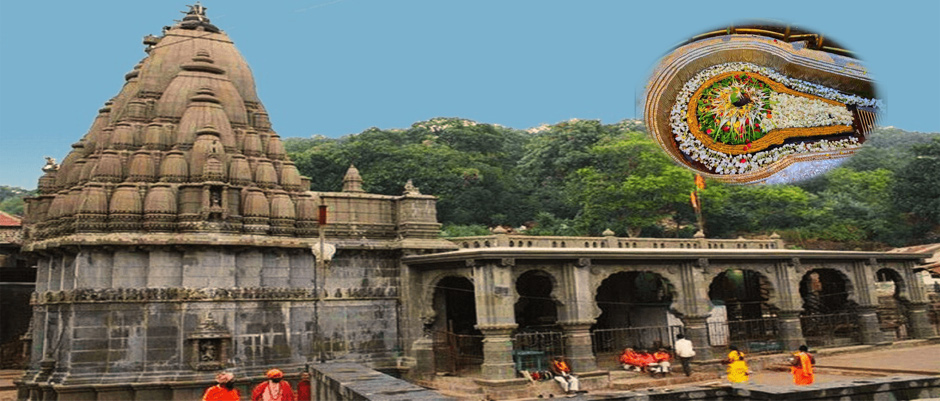
Bhimashankar Temple
Bhimashankar Jyotirlinga: A Radiant Sanctuary Amidst the Sahyadri Hills
Nestled deep within the Sahyadri hills of Maharashtra, Bhimashankar Temple is one of the twelve sacred Jyotirlingas of Lord Shiva. Situated in the Khed region of Pune district, this revered temple blends divine serenity with the richness of untouched wilderness. Surrounded by dense forests and rare species of flora and fauna, Bhimashankar offers both spiritual elevation and serene seclusion.
The Sacred Jyotirlinga of Maharashtra
The sanctum of Bhimashankar houses a Swayambhu (self-manifested) Shivlinga, believed to emit divine energy. Among the five Jyotirlingas of Maharashtra, this site holds a special place for devotees of Shaivism. The Garbhagriha (sanctum sanctorum) is set lower than the rest of the temple, symbolizing humility and the inner descent toward self-realization.
Legends That Enshrine the Temple's Glory
The Tale of Demon Bhima
According to ancient lore, during the Treta Yuga, Bhima, the son of Kumbhkaran (Ravana's brother), sought vengeance against Lord Rama for his father’s death. Through deep penance, Bhima obtained great power from Lord Brahma. Blinded by his strength, he imprisoned a devout king named Kamarupeshwar who refused to forsake his worship of Lord Shiva.
Even in captivity, the king continued his worship and fashioned a lingam. When Bhima tried to destroy the Shivlinga, Lord Shiva emerged from it and vanquished him, preserving the sanctity of devotion. Impressed by the events, the celestial beings humbly requested Lord Shiva to remain at that sacred site, where he then revealed himself as the Bhimashankar Jyotirlinga.
Tripurasura and the Ardhanarishvara Form
Another story speaks of the demon Tripurasura, who, after receiving a boon from Lord Shiva, began tormenting the world. To restore order, Shiva joined with Parvati and assumed the form of Ardhanarishvara, half-male and half-female. Together, they defeated the demon on the holy day of Kartik Purnima, commemorated as Tripurari Purnima. The place where this took place came to be known as Dakinyam Bhimashankaram, after the demon’s consorts Dakini and Shakini, who were granted blessings by Shiva.
Where River Bhima Begins and the Secret Shivlinga Dwells
The revered Bhima River is believed to emerge from the Shivlinga itself. Interestingly, the river disappears into the wilderness before reappearing in a secluded forest area a few kilometers away. This mystical spot is known as Gupta Bhimashankar (Hidden Bhimashankar), accessible through a narrow pathway behind the main temple.
Mokshakund and Sage Tapasya
Behind the temple lies the Mokshakund Teertha, where Kaushika Maha Muni, a great sage, performed intense penance. This teertha is considered highly purifying, and pilgrims often bathe here to cleanse themselves spiritually. It is also said that Sant Jnaneshwar, the great Marathi saint and yogi, visited Bhimashankar and meditated here.
Architectural Grandeur of the Temple
Perched at an elevation of 1034 meters, the Bhimashankar temple showcases an exquisite blend of ancient stonework and Nagara-style architecture. The massive stone pillars, ornate carvings, and scenes from Hindu mythology etched into the temple walls reflect the brilliance of the Vishwakarma sculptors.
Within the temple precincts is a shrine dedicated to Lord Shani and the sacred idol of Nandi, Shiva’s vahana (bull), placed at the entrance. The carvings of Amba-Ambika in Buddhist style can still be seen on nearby hillocks.
Historical Legacy and Contributions
While the original builder of the temple remains unknown, records suggest the temple dates back to at least the 13th century. Back in 1437 CE, a Pune-based merchant named Chimaji Antanji Nayik Bhinde contributed to the temple by building a large assembly hall.
During the rule of the Marathas, prominent leader Nana Phadnavis enhanced the temple structure by constructing its Shikhara and the main hall. Even Chhatrapati Shivaji Maharaj supported the temple by making offerings for daily rituals. Contributions from Rajaram Maharaj, Balaji Vishwanath Peshwa, and other Peshwa nobles further enhanced the temple’s stature.
Bhimashankar Wildlife Sanctuary: A Divine Forest
The temple sits within the Bhimashankar Wildlife Sanctuary, a protected region declared under the Wildlife Protection Act, 1972. Home to the endangered Malabar Giant Squirrel and numerous endemic species, the sanctuary is a paradise for nature lovers and a testimony to India’s biodiversity.
A Sacred Destination for Devotees and Nature Seekers
Bhimashankar is more than just a pilgrimage—it is a journey into the heart of devotion, myth, history, and nature. Whether you're seeking spiritual solace, architectural beauty, or tranquil wilderness, this Jyotirlinga offers it all.
Come with an open heart, and you may leave with your soul lighter, your mind calmer, and your faith deeper.
Temple Schedule
4.30 AM Kakada Aarti
5.00 AM Nijarup Darshan
5.30 AM Regular Pooja,Abhishek starts
12.00 PM Naivedya Pooja (No Abhishek inside)
12.30 PM Regular Pooja,Abhishek starts
3.00 PM Madhyan Aarti (No Darshan for 45min)
4.00 PM to 9.30 PM Shringar darshan (No Abhishek inside)
7.30 PM Aarti
9.30 PM Mandir Closed
Note:
Except Monday, Pradosh, Shravan Mass, Mahashivratri - Present Abhisheka (Abhishek inside temple ) till 2.00 PM.
On Monday, Pradosh, Shravan Mass, Mahashivratri - Present Abhisheka (Abhishek inside temple ) till 6.00 PM
